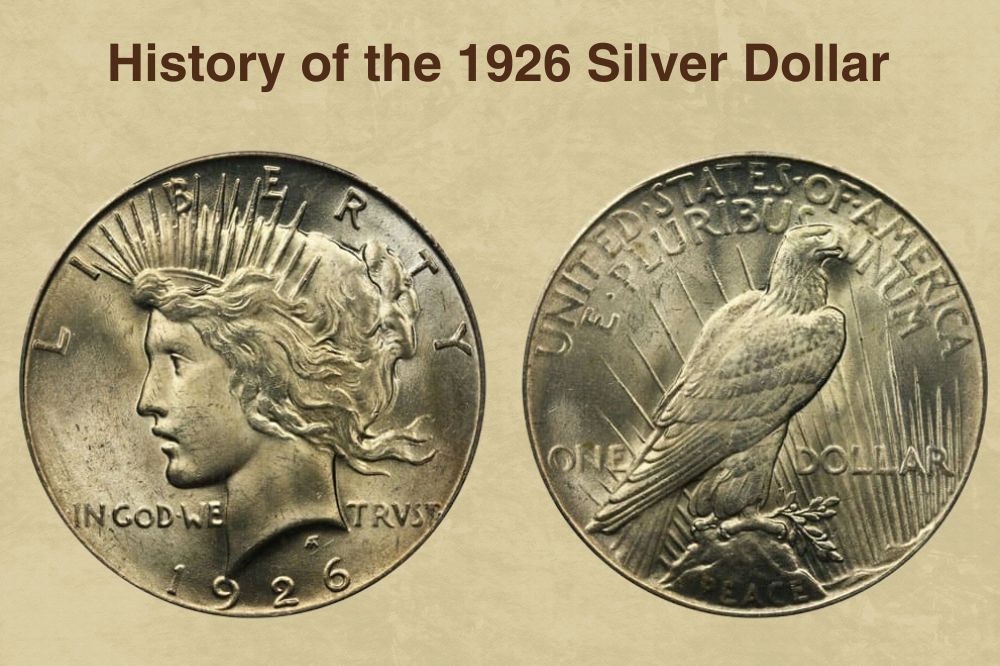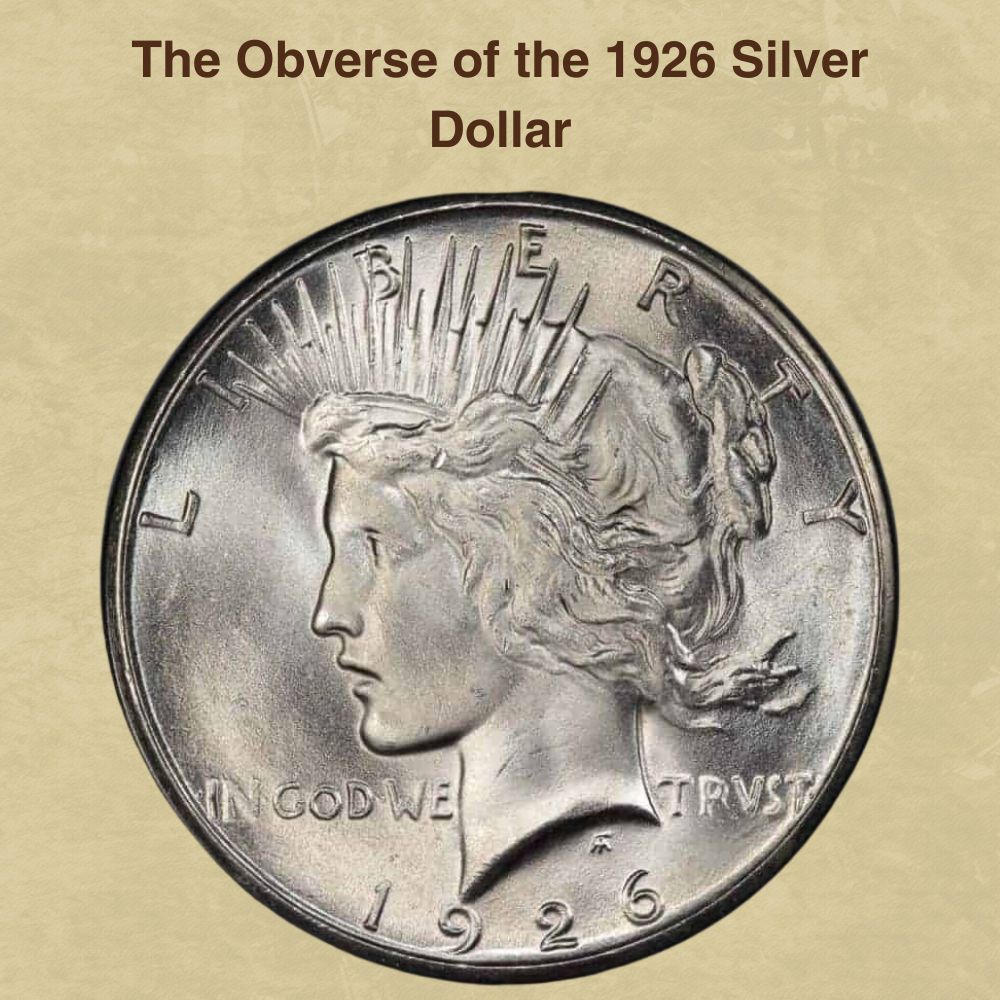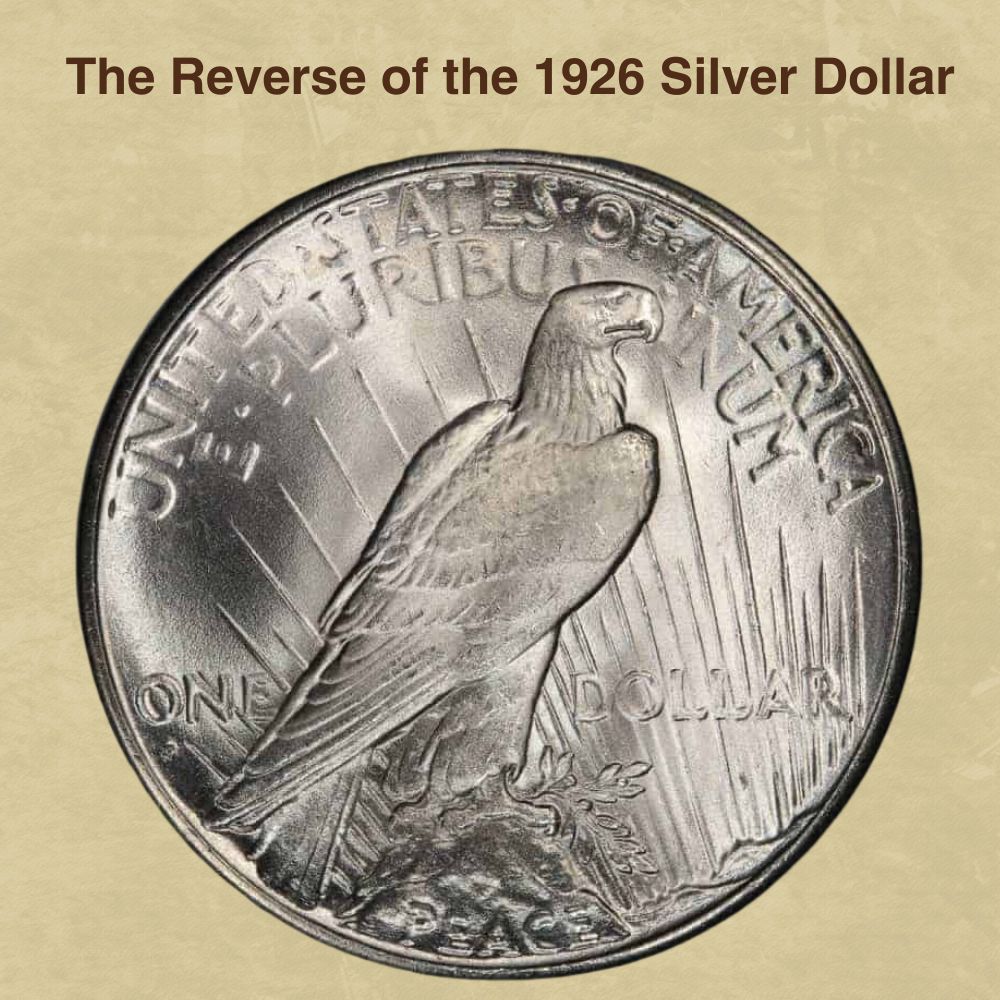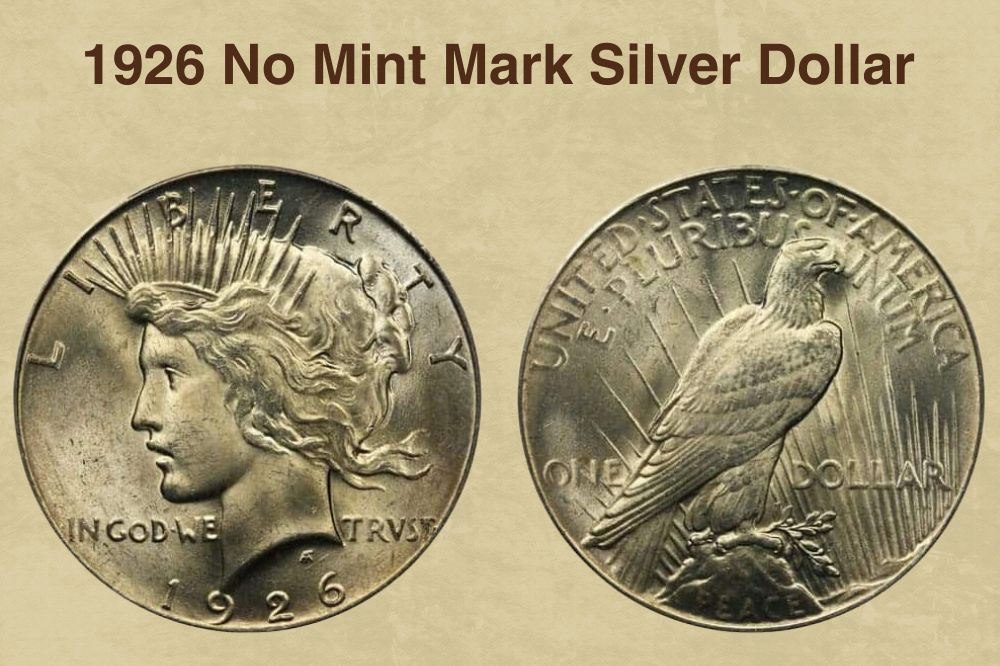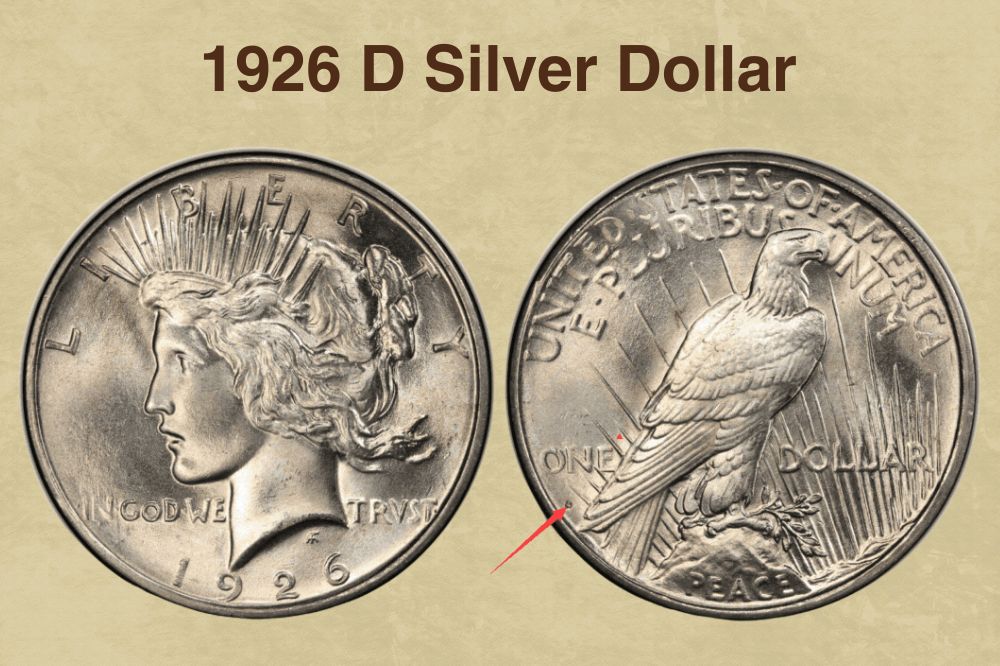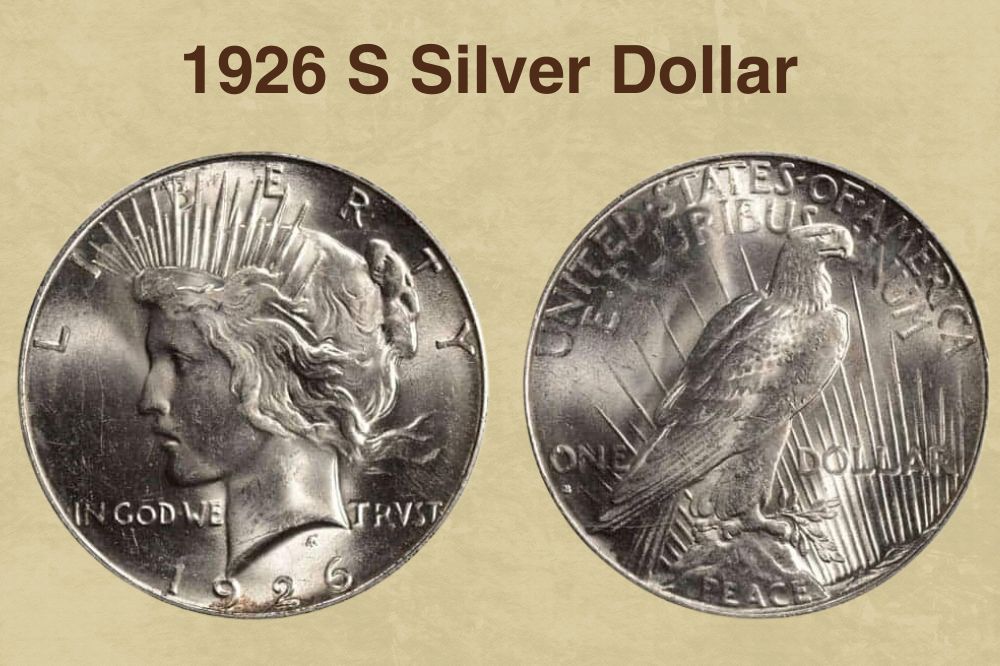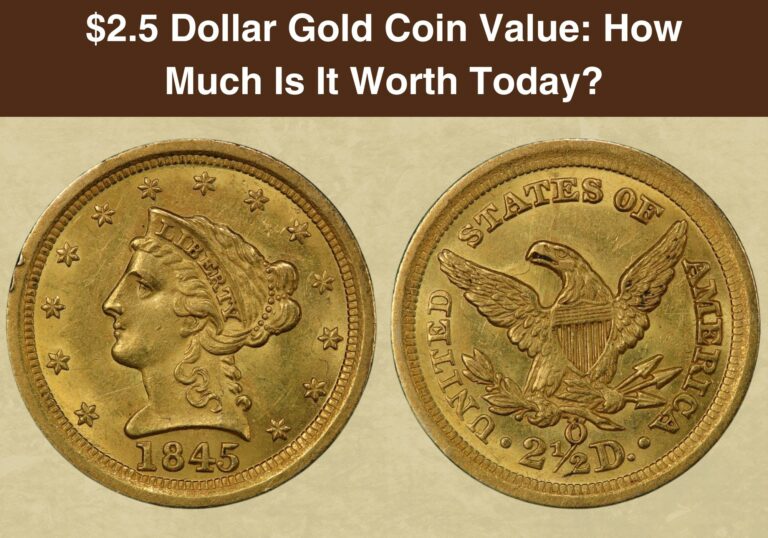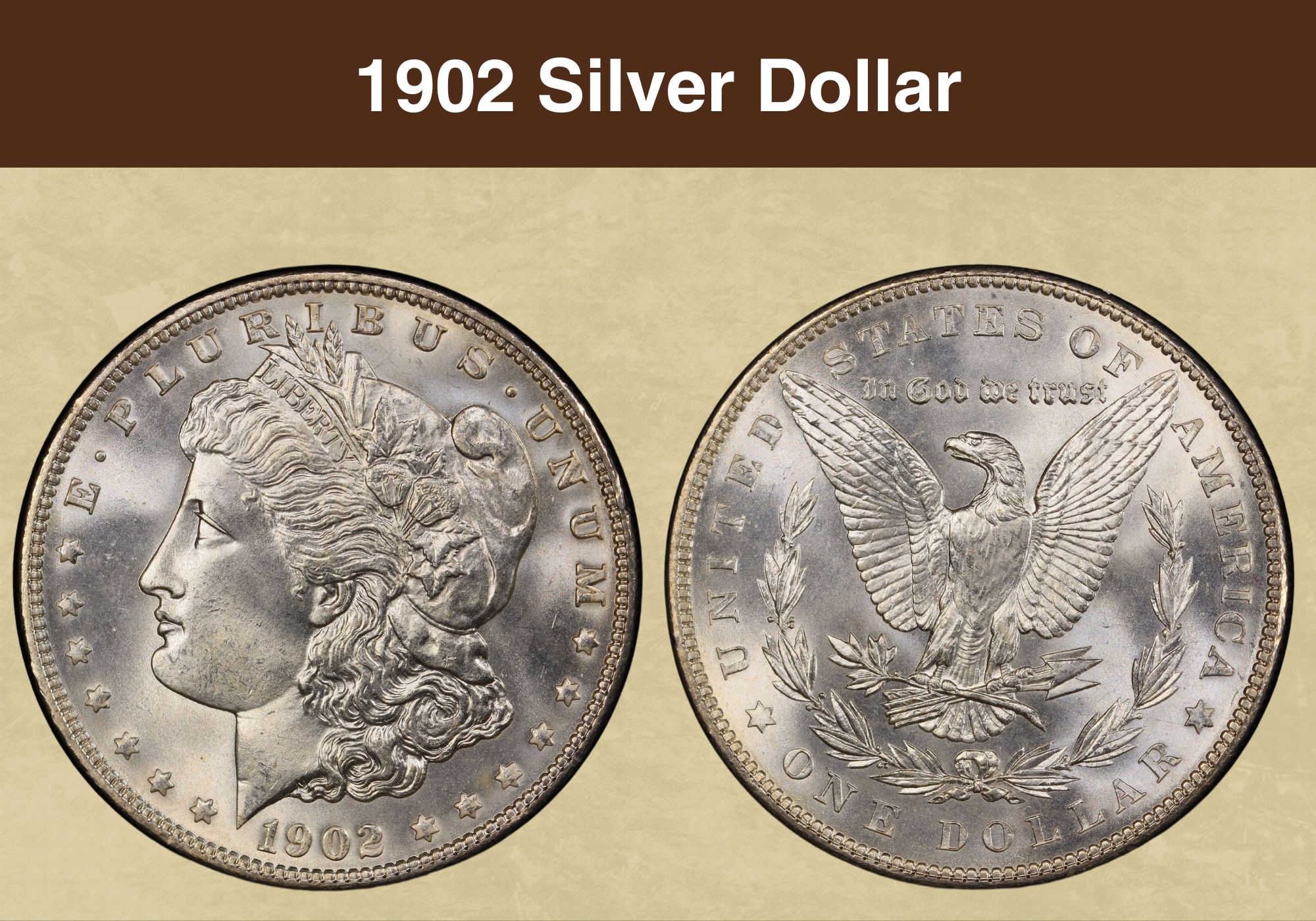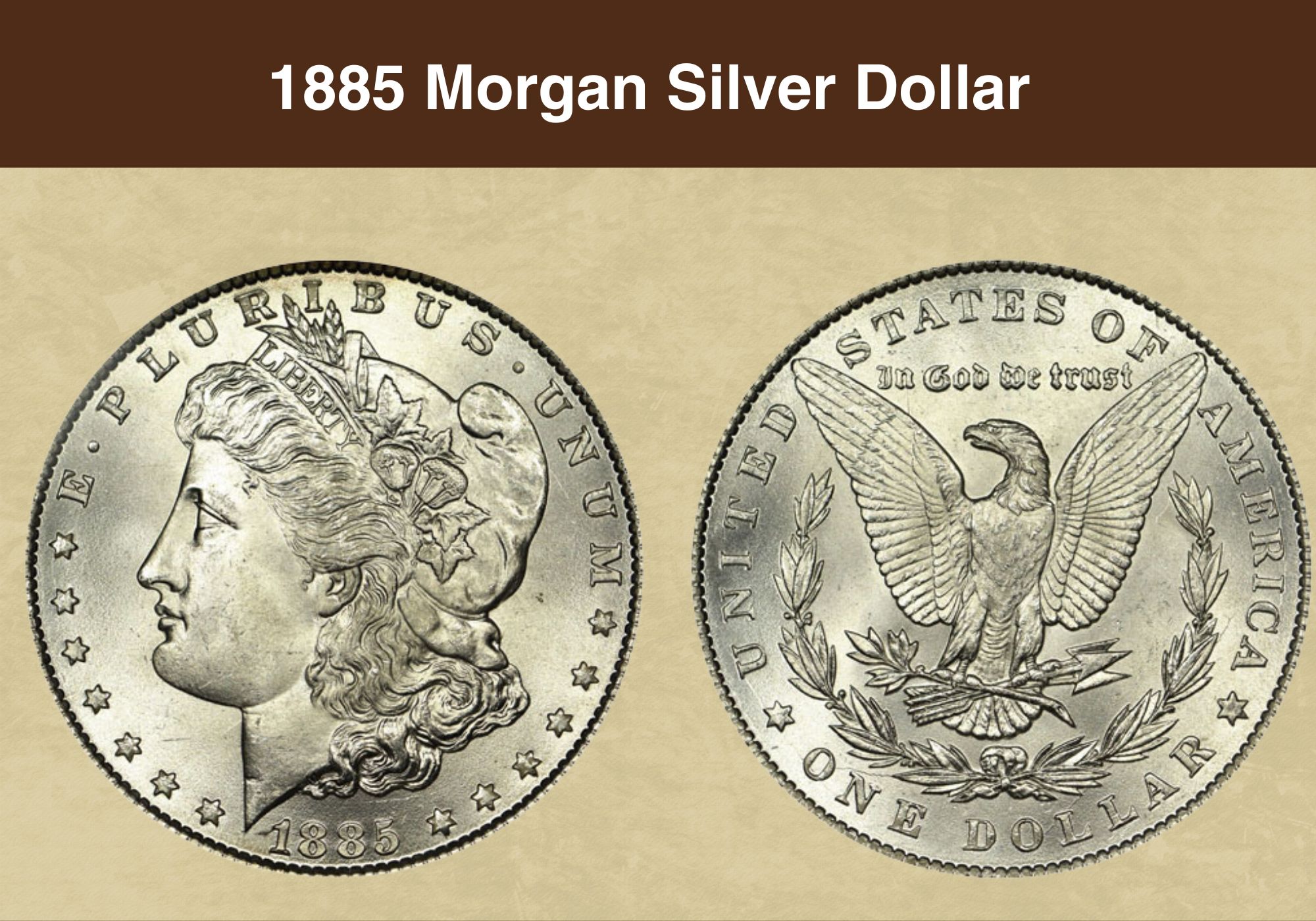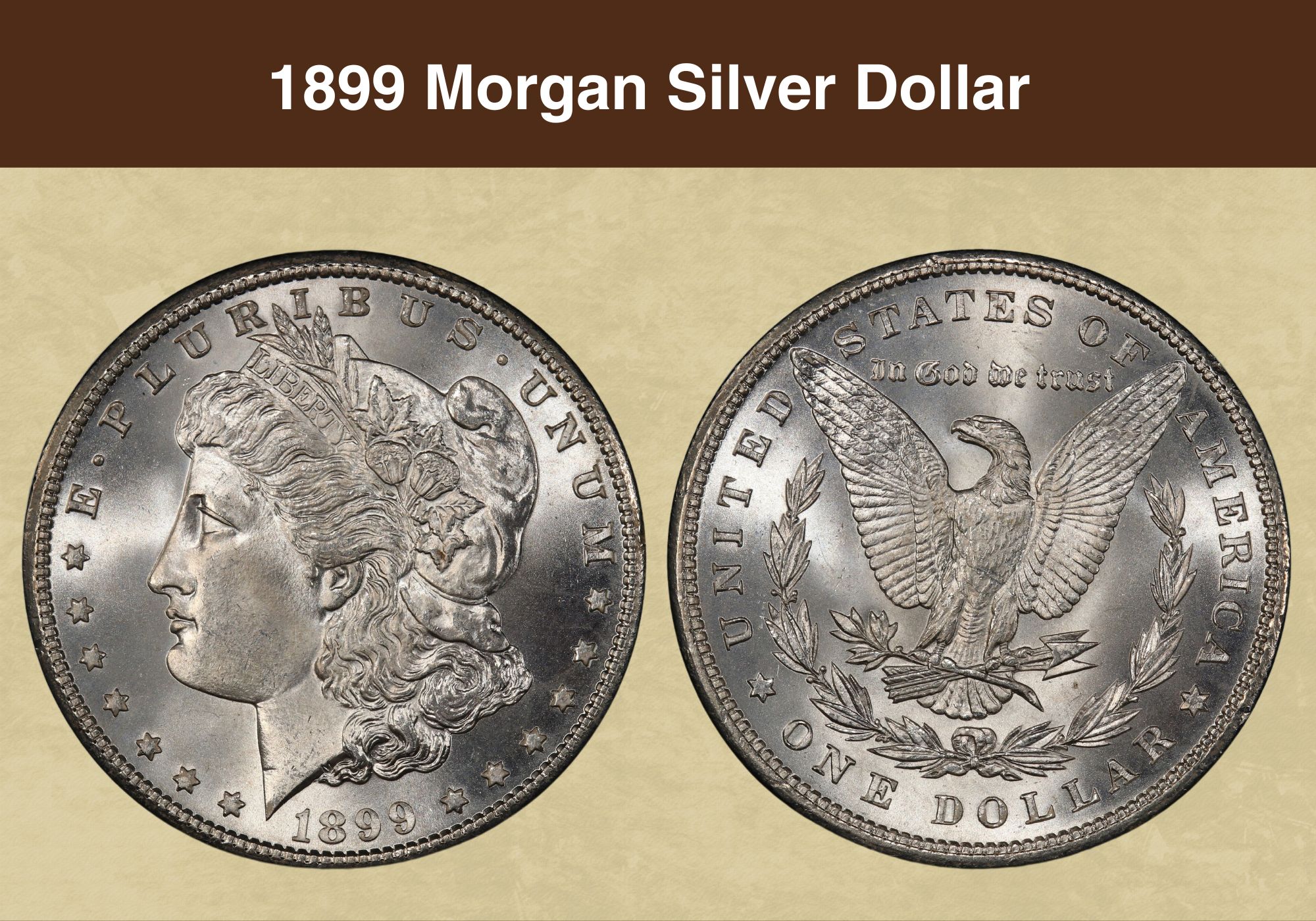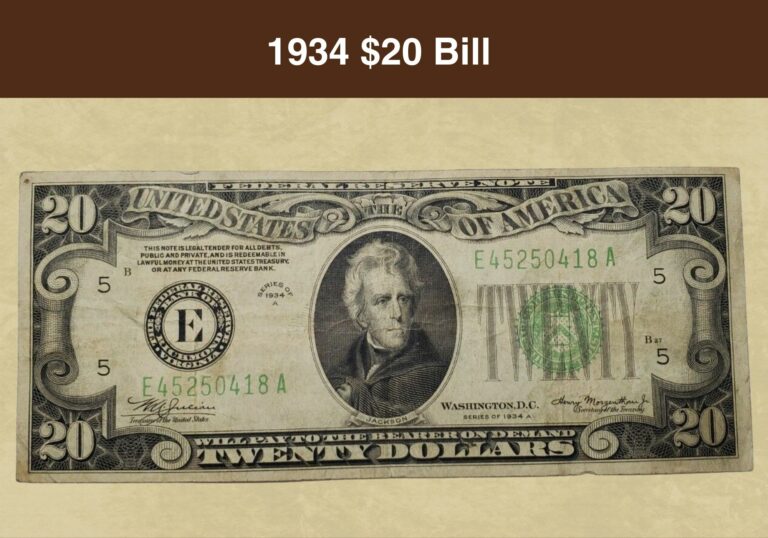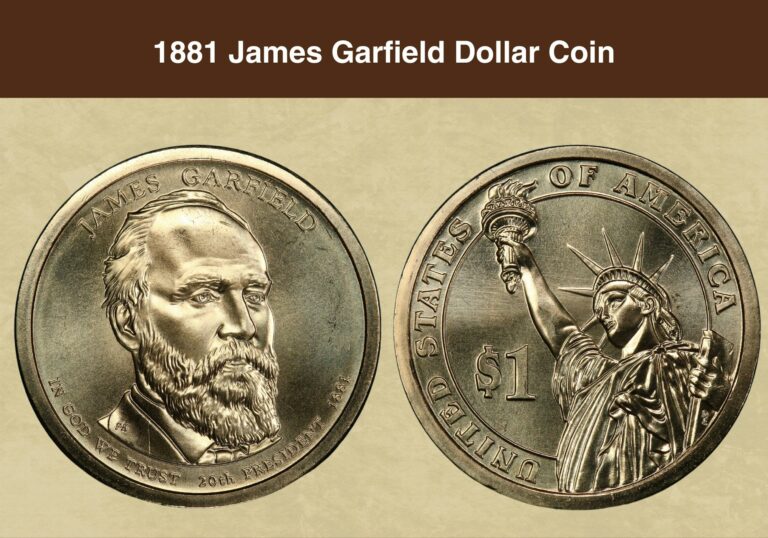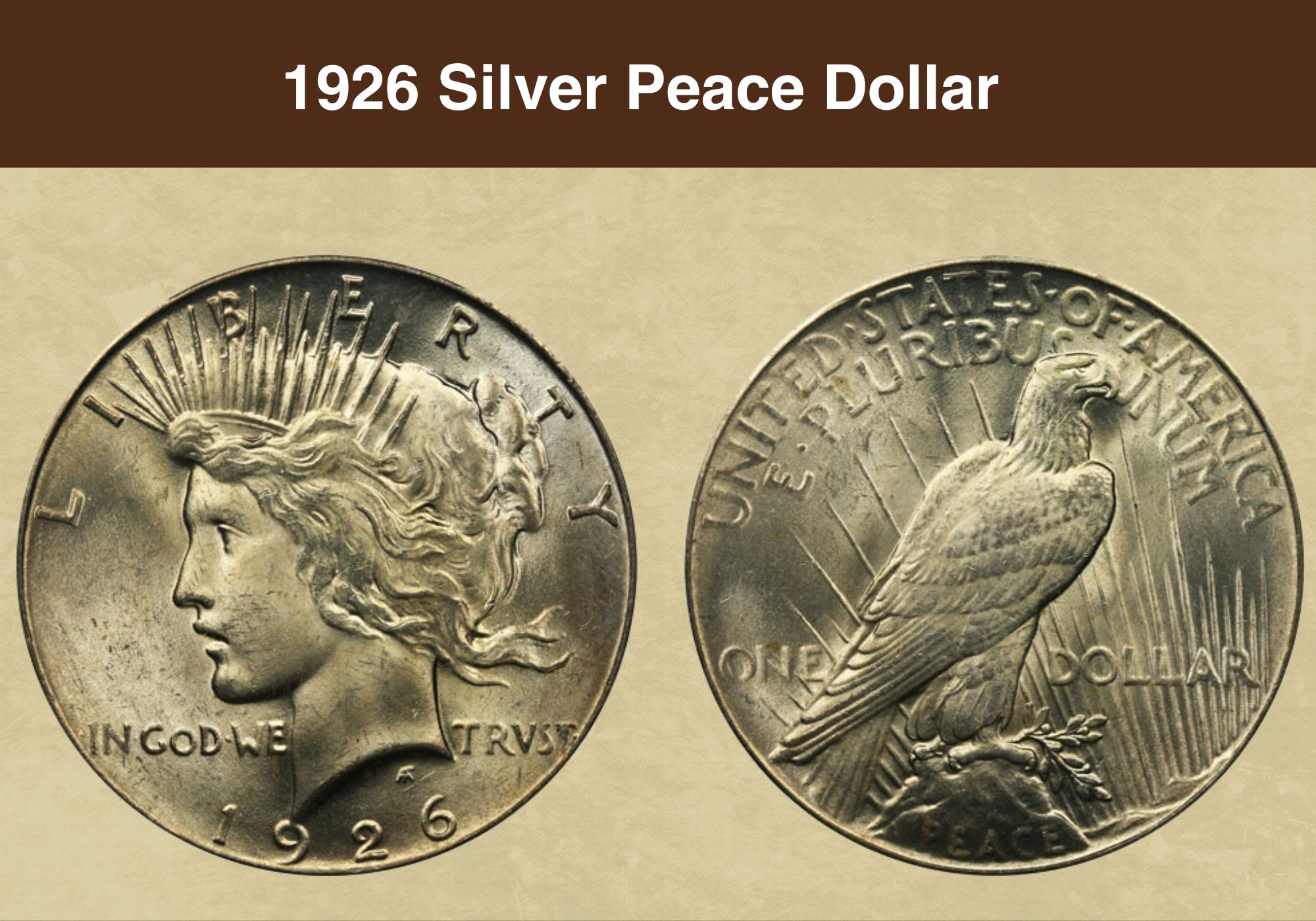
Coin Value Contents Table
- 1926 Silver Dollar Value Chart
- History of the 1926 Silver Dollar
- Features of the 1926 Silver Dollar
- 1926 Silver Dollar Grading
- 1926 Silver Dollar Value Guides
- 1926 No Mint Mark Silver Dollar Value
- 1926 D Silver Dollar Value
- 1926 S Silver Dollar Value
- Rare 1926 Silver Dollar Errors List
- Where to Sell Your 1926 Silver dollar ?
- FAQs
If you’ve found one of the beautiful silver dollars struck in 1926, you’re probably interested to find out more about it. It’s from the series known as “Peace dollars”. And some of these coins can be highly collectable.
We’re going to delve into the 1926 silver dollar value and the factors that influence it. We’ll learn about its history and design. And we’ll take a look at some of the interesting errors that snuck past the Mint inspectors.
Ready to find out more? Then let’s get started!
1926 Silver Dollar Value Chart |
||||
| Mint mark | VF20 | XF45 | MS60 | MS65 |
| 1926 (P) No Mint Mark Silver Dollar Value | $36 | $40 | $85 | $550 |
| 1926 D Silver Dollar Value | $39 | $45 | $150 | $1,250 |
| 1926 S Silver Dollar Value | $36 | $43 | $85 | $1,000 |
History of the 1926 Silver Dollar
1926 saw the sixth mintage of the silver dollars known as “Peace dollars”, which replaced the coins known as Morgan dollars. They were minted to celebrate peace after the conclusion of the First World War.
At the time, silver dollars were being struck in large quantities. Under the terms of the 1918 Pittman Act, the Treasury was obliged to buy large amounts of silver and convert it into coins.
The same Act had required millions of earlier silver coins to be melted down. It was designed to support the British, who were feeling the effects of German propaganda in India. That had convinced the population that British paper currency was worthless, threatening to derail the war effort.
The silver coins melted down under the Pittman Act were sold to the British at a fixed price. But large numbers of new coins had to be struck to replace them. Between 1920 and 1933, over 270 million standard silver dollars were replaced.
No-one knows for sure where the idea for a coin commemorating peace first came from. But a renowned coin collector by the name of Farran Zerbe may have influenced the decision.
An article in the collecting magazine The Numismatist quotes Zerbe musing on the idea of a coin commemorating “victory and peace”. He felt there would be a pleasing symmetry to this, given that so many silver coins had been sacrificed to help fight the war.
Wherever the idea first came from, it needed unanimous support in Congress to proceed. But James R. Mann, a representative of Illinois, objected.
However, when the Morgan dollar hit 25 years old, the Treasury could proceed with a new design without seeking Congressional approval. The Peace dollar was finally issued in 1921, the same year the USA signed a peace treaty with Germany.
Peace dollars continued to be struck every year until 1928. A commemorative Peace dollar was struck again in 1934 and 1935. And a modern version was issued from 2021 onwards, targeted at collectors.
Also read: 12 Most Valuable One-Dollar Coin Worth Money
Features of the 1926 Silver Dollar
The Obverse of the 1926 Silver Dollar
The Mint launched a competition to find a design for the new Peace dollar. The winner was a sculptor named Anthony de Francisci. He was just 34 years old at the time, and beat several more experienced coin artists to the prize.
Francisci needed a model for the Lady Liberty who would appear on the obverse of the coin. And with the deadline pressing, he asked his wife, Teresa, to sit for him.
For Teresa, it was a great honor. An Italian immigrant, she later recalled her first sight of the Statue of Liberty from the steamer which brought her to the US. Standing on the deck, she said, she had struck a pose in imitation. Seeing her face as Liberty on the dollar felt like a dream come true.
The artist, however, noted that he had used some licence in his portrait, elongating Teresa’s face. Her portrait shows her in profile facing left, her lips parted and her hair blowing back from her neck.
The word “LIBERTY” curves above her image, while the motto “IN GOD WE TRUST” is inscribed further down. The date is at the bottom, running parallel to the lower coin edge. Francisci’s monogram appears between it and the bottom of Liberty’s neck.
The Reverse of the 1926 Silver Dollar
The reverse design was also the work of Francisci – but in this case, things didn’t go quite so smoothly.
Francisci had actually prepared two initial designs for the reverse. One of these featured an aggressive eagle and a broken sword, the second a calmer bird with an olive branch.
The less feisty eagle was chosen, but the Mint Director, Raymond T. Baker, asked for the broken sword to be included in the design too.
When the planned design was released to the public, that sword attracted considerable controversy. An influential article in the New York Herald argued that a broken sword was emblematic of defeat, rather than peace.
Baker was on his way to the San Francisco Mint facility as the furore over the sword grew – and in those days, there was no way of contacting him. In his absence, the issue was escalated to the Treasury Undersecretary, Seymour Parker Gilbert. Gilbert decided the sword had to go.
This left a gap in the design, but George T. Morgan, the Mint’s Chief Engraver, came to the rescue. His changes resolved the problem so skilfully that they weren’t detected until almost a century later.
Other Features of the 1926 Silver Dollar
Although referred to as a “silver dollar”, the Peace dollar isn’t completely silver. One tenth by weight is copper.
It measures 38.1 millimeters across and weighs 26.73 grams. And if you turn it on its edge, you’ll see a series of grooves known as “reeds”. These meant that any attempt to shave precious metal from the edge of the coin would be visible immediately.
The 1926 silver dollar is also known as a “low relief Peace dollar”. The original design had been so high in places that it had been vulnerable to wear and tear. The relief was therefore lowered in 1921.
The change in the design is also visible in the spikes of Liberty’s tiara, which are sharper and narrower in the low relief version.
To find out more about how to distinguish between high and low relief Peace dollars, take a look at this YouTube video from Numsmatic Stacker.
Also read: 14 Most Valuable Coins In Circulation
1926 Silver Dollar Grading
| # | Grade |
|---|---|
| 1 | Basal State-1 |
| 2 | Fair |
| 3 | Very Fair |
| 4, 5, 6 | Good |
| 7, 8, 10 | Very Good |
| 12, 15 | Fine |
| 20, 30 | Very Fine |
| 40 | Extremely Fine |
| 50 | About Uncirculated |
| 60 | Mint State |
| 65 | Mint State |
| 70 | Mint State |
Please check our grading guides to know your coin scale, It’s the necessary step to know the exact value of your coin.
Check out now: How to Grade Peace Silver Dollar?
1926 Silver Dollar Value Guides
1926 No Mint Mark Silver Dollar Value
Fewer than 2 million Peace dollars were struck at the Philadelphia Mint in 1926. That’s less than a fifth of the total for the previous year. Despite this, it’s not particularly rare – the PCGS estimates around 275,000 survive in all grades, with around 75,000 of those in uncirculated condition.
In most cases, the better the condition of the coin, the more it will be worth. And at the finest grades, a difference of even a point on the grading scale can make a major difference to value.
The coin grading scale runs from 1 to 70. 1 is used for coins in the poorest condition where the year and denomination remain identifiable. 70 is for perfect examples.
Coins graded 60 and above are “mint state” – i.e. those that have never been circulated. And those graded 65 and above are “gems”. Coins graded by the PCGS, an independent agency, also have a prefix of one or two letters describing the condition – like VG for “very good”.
1926 Philadelphia silver dollars are available at virtually all grades. An example graded VF20 (“very fine”) is worth around $36. Values rise slowly through the circulated grades – an XF45 (“extremely fine”) coin is worth around the $40 mark.
Mint state coins are worth more. At MS60, the value is $85, while for a gem MS65, you can expect to have to pay around $550.
Examples at MS66 and above are rare, and this is reflected in values. At MS66, the PCGS estimates a 1926 Philadelphia quarter is worth $1,900. At MS66+, that rockets to $9,000.
The finest example known to exist is a sole coin graded MS67. That’s valued at an astounding $125,000.
1926 D Silver Dollar Value
The Denver facility struck slightly more silver dollars than its Philadelphia counterpart in 1926 – just over 2.3 million. Around 200,000 of those are thought to survive today, with around 30,000 in mint state, and around 4,000 gems.
That makes it one of the more common dates in the series. Prices for circulated examples start at around $37 for a coin graded 3. Those graded 2 carry a premium, and are worth around $75 each.
Values hover around the $47 mark all the way to XF45+, and range between $60 and $135 for “about uncirculated” examples (AU50 to AU58+).
In mint state, a 1926-D silver dollar is worth at least $150. At MS64, the value is around $550. And at MS65, it’s $1,250.
There are 17 coins graded MS67 or higher. 14 of those are graded MS67, and they’re each valued at $38,500. The remaining example is graded MS67+, and that’s worth $52,500.
1926 S Silver Dollar Value
The Mint facility at San Francisco produced more silver dollars in 1926 than anywhere else. Almost 7 million coins came out of the presses there. And it’s one of the few dollars with an “S” mint mark that usually exhibits a good strike.
Circulated coins range in value from around $35 to $75. There’s a premium for coins graded 1, which are valued at $115.
Most mint state examples are graded MS63 (over 3,300 coins certified to date, each valued at $225) or MS64 (over 2,600 certified coins, each valued at $425).
At MS66 and above, however, availability is far more restricted. The PCGS has certified fewer than 200 coins at those grades. Values are $3,850 for those graded MS66, $35,000 for MS66+, and $60,000 for the top grade for this mintage, MS67.
Also read: Top 10 Most Valuable Morgan Silver Dollar Worth Money
Rare 1926 Silver Dollar Errors List
1926 D Silver Dollar, Cracked Planchet
Sometimes the planchets – the metal discs on which the design is struck – are damaged before they leave the Mint.
It can be difficult to distinguish Mint errors like this from coins with later damage. So if you’re thinking about adding one to your collection, look for a coin that’s been authenticated by a reputable grading agency.
One coin that had been authenticated by the PCGS was a 1926 silver dollar struck at the Denver Mint facility. The planchet had cracked, and the “1” of the date had been lost. On the reverse, the crack also obliterated the second “T” of “STATES”.
The coin wasn’t in the best condition, graded XF45. But the error meant that it sold at auction for $130.
1926 D Silver Dollar, Rim Cud
Cuds are blobs at the edge of coins. They’re formed when a part of the die used to strike the coin breaks away.
One of the silver dollars struck at the Denver Mint facility had a cud at the top of the obverse. It appeared between the letters “E” and “R” of Liberty, but didn’t interfere with the design.
It was graded AU53 by the PCGS, and sold at auction for just over $80.
This YouTube video from Couch Collectibles looks at these and other errors among 1926 silver dollars. It also looks at some of the different varieties produced by different die pairings and explores their values.
Where to Sell Your 1926 Silver dollar ?
Now that you know the value of your coins, do you know where to sell those coins online easily? Don’t worry, I’ve compiled a list of these sites, including their introduction, pros, and cons.
Check out now: Best Places To Sell Coins Online (Pros & Cons)
FAQs
How much is a 1926 silver dollar worth?
The answer to that depends on the condition, the mint mark, and whether it has an error.
In circulated condition, coins at most grades, and from any Mint facility, will be worth around $30 to $40.
Coins at the very lowest grades, 1 or 2, can be worth twice that or more. And those in mint state can be worth anything from around $100 to several thousands.
The presence of a Mint error will add a premium to the value. Just how much depends on how rare and dramatic the error is.
How much is a 1926 silver dollar worth with mint marks?
Silver dollars struck in Denver or San Francisco will have a mint mark on their obverse – a “D” or an “S” respectively.
Most coins in circulated grades will be worth $30 to $40. But values for the very finest examples are much higher.
The best quality 1926 S silver dollars to have come to light are graded MS67 and worth $60,000 apiece. For the D mint mark, the top grade is MS67+. The only coin at that level is valued at $52,500.

